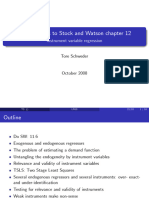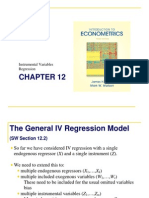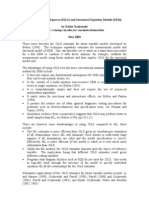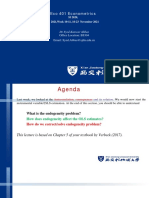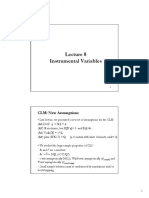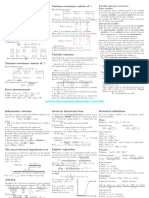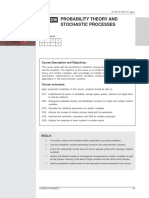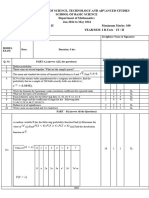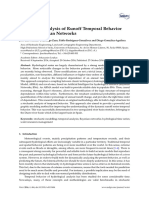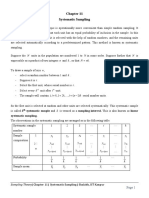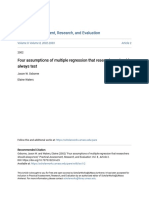0% found this document useful (0 votes)
8 views56 pagesIV Notes1-2
The document discusses Instrumental Variables (IV) regression, which addresses biases in estimating causal relationships, specifically omitted variable bias, simultaneous causality bias, and errors-in-variables bias. It outlines the Two Stage Least Squares (TSLS) method for estimating parameters using a valid instrument that meets relevance and exogeneity conditions. Examples illustrate the application of IV regression in contexts like demand for butter and cigarette consumption, emphasizing the importance of valid instruments for accurate estimation.
Uploaded by
a.irem2010Copyright
© © All Rights Reserved
We take content rights seriously. If you suspect this is your content, claim it here.
Available Formats
Download as PDF, TXT or read online on Scribd
0% found this document useful (0 votes)
8 views56 pagesIV Notes1-2
The document discusses Instrumental Variables (IV) regression, which addresses biases in estimating causal relationships, specifically omitted variable bias, simultaneous causality bias, and errors-in-variables bias. It outlines the Two Stage Least Squares (TSLS) method for estimating parameters using a valid instrument that meets relevance and exogeneity conditions. Examples illustrate the application of IV regression in contexts like demand for butter and cigarette consumption, emphasizing the importance of valid instruments for accurate estimation.
Uploaded by
a.irem2010Copyright
© © All Rights Reserved
We take content rights seriously. If you suspect this is your content, claim it here.
Available Formats
Download as PDF, TXT or read online on Scribd
/ 56








